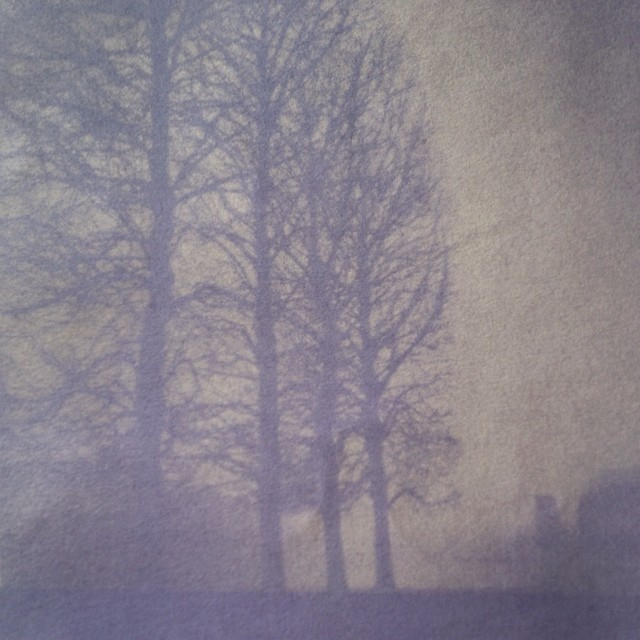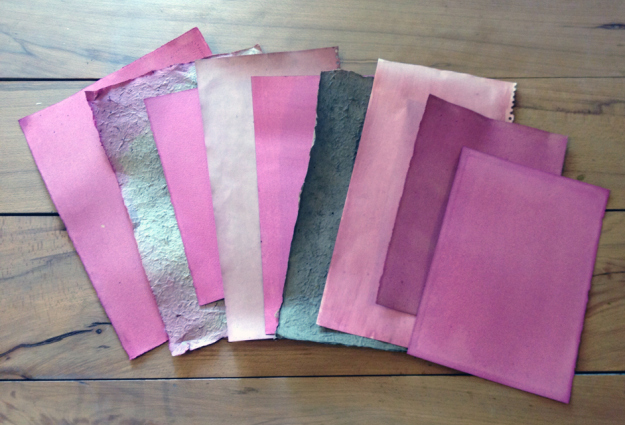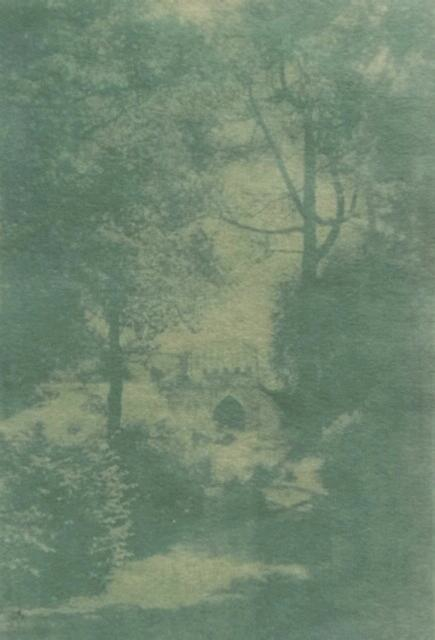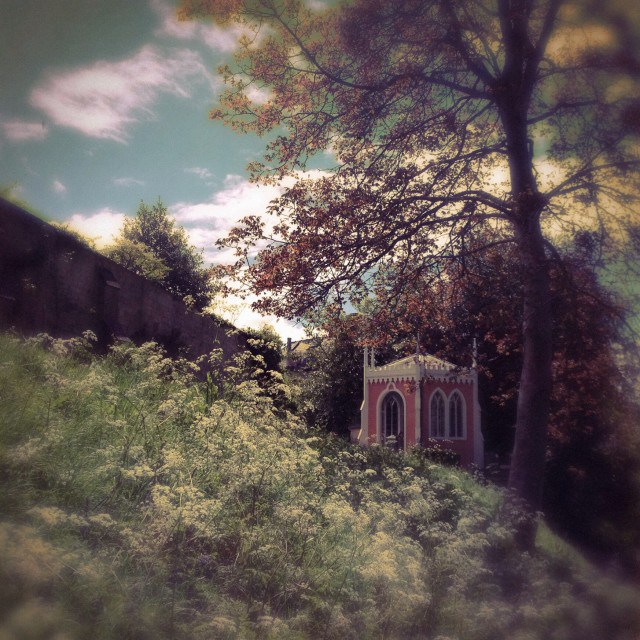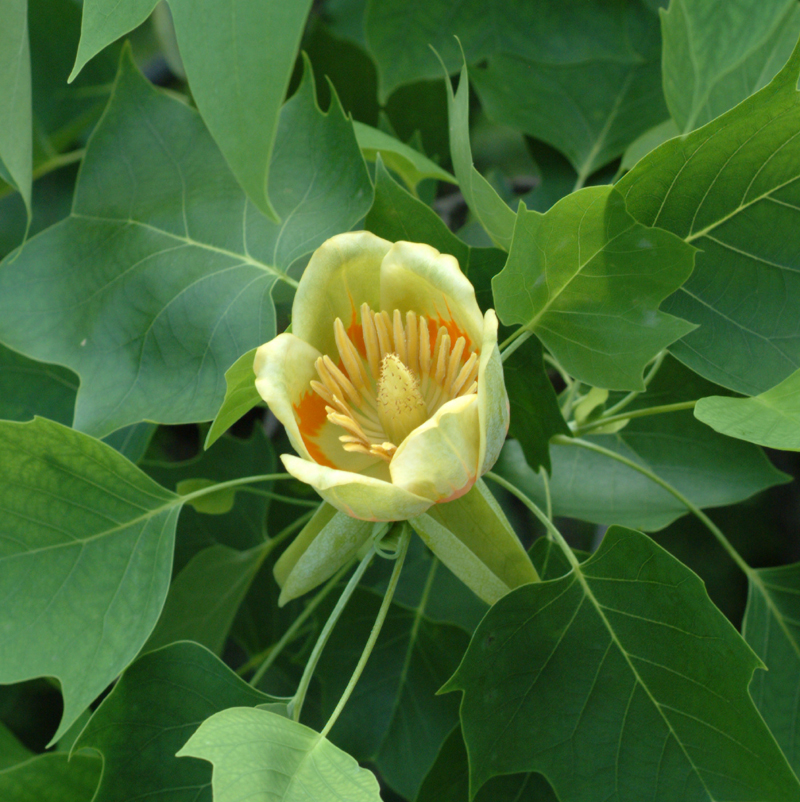MIDSUMMER IN THE SUSSEX GARDENS OF VIRGINIA WOOLF AND VANESSA BELL
PART II: VIRGINIA WOOLF’S GARDEN, MONK’S HOUSE AT RODMELL, EAST SUSSEX
I drive on from Charleston (see THE DAHLIA PAPERS June 2015, ‘A dithering blaze of flowers, butterflies and apples’) to Rodmell, the home of Virginia and Leonard Woolf from August 1919 until Leonard’s death in 1969. Unlike Charleston, I know very little about Monk’s House. All I have to go on is a memory of a seductive pea green drawing room dull of books, paintings and scarlet pelargoniums in terracotta pots, once seen in a magazine.
The approach to Monk’s House, photograph © Caroline Arber from Caroline Zoob’s book Virginia Woolf’s Garden
The house is right on the street in the pretty village of Rodmell. The National Trust ticket office is cleverly situated a little further down the road which means that when you open the plain wooden gate and walk up along the first brick path that leads you behind the house into the garden, you feel completely as if you are visiting a private house.
The initial impressions are a little confusing. Almost immediately I turn into The Italian Garden. Here a pair of urns flank a rectangular pool and are simply and effectively planted with Geranium macrorrhizum ‘Bevan’s Variety’. The Italian Garden looks dreamy and romantic in the tree-filtered sunshine, but was heartily scorned by Virginia Woolf’s friend Vita Sackville-West ‘You can’t recreate Versailles on just quarter an acre of Sussex, it just can’t be done.’
Geranium macrorrhizum filled urns and rectuangular pool in The Italian Garden
But next up is a disconcerting towering palm tree and I am surprised to see that the entire back of the house is formed of a lean-to conservatory.
Conservatory and palm tree at Monk’s House
Stepping inside the house I am thrown again by a clearly very personal collection of cactus, succulents and vines, together with well worn stripy canvas deckchairs, brooms and a garden table. Except for a single sheaf of leaflets in a plastic holder, the whole scene looks as if its passionate gardener-owner has just popped out to fetch something from the back of the garden.
Cactus, succulents, pelargonium and vines at the entrance/ conservatory of Monk’s House
Once inside, I find myself quickly in the calm, green painted sitting room. I am convinced that this is the colour I need to use if I ever move into a country cottage of my own. As I read afterwards in Caroline Zoob’s completely absorbing book about the ten years she lived at Monk’s House as a tenant of the National Trust, green ‘was Virginia’s favourite colour and seems to have seeped into the fabric of Monk’s House such that one cannot imagine the house any other colour. On sunny afternoons the plants curling around the windows “green veined and quivering” cast shadows in the sunlight reflected on the walls.’
 Filtered light and shadows in the green painted Sitting Room at Monk’s House.
Filtered light and shadows in the green painted Sitting Room at Monk’s House.
Throughout the small house there is an atmosphere of thoughtful, polished homeliness – as opposed to the academic chaos I may have expected – and it seems entirely natural to fall into conversation with a retired academic from Sussex University who remembers coming to have tea on the lawn here when he was a young PhD student with the very charming political theorist, author and publisher, Leonard Woolf, Virginia’s husband.
 The Dining Room at Monk’s House
The Dining Room at Monk’s House
 Portrait of Virginia Woolf by her sister Vanessa Bell c 1912 with flowers from the garden
Portrait of Virginia Woolf by her sister Vanessa Bell c 1912 with flowers from the garden
More complicated is the visit to Virginia Woolf’s bedroom. The bedroom is in a stand alone section of the house which opens out onto the garden – but there is something about its simplicity and small size, with its basic washstand and single bed that makes my visit feel too intrusive.
Chest of drawers and washstand in Virginia Woolf’s bedroom
I wish I had read Caroline Zoob’s book on Monk’s House before my visit:
Monk’s House is now owned by the National Trust and Zoob was a tenant of the house for ten years. Her description of the layers of experience of living in a house which was so famously lived in before by such well known people is fascinating. I love her account of the experience of bathing in the same bath in which Virginia Woolf bathed every morning, reading out loud passages from a work in progress. The bath is fitted at a slight tilt so that water level is always strangely angled in the tub – a detail that makes you smile and that catapults the past into the present.
Throughout the book, Zoob highlights the Woolfs’ deep-held beliefs about the relationship between a house and its occupiers. Leonard Woolf writes about this brilliantly: ‘…what has the deepest and most permanent effect upon oneself and one’s way of living is the house in which one lives. The house determines the day-today, hour-to-hour, minute-to-minute quality, colour, atmosphere, pace of one’s life; it is the framework of what one does, of what one can do, and of one’s relations with people.’ It is an enduring approach to living which makes complete sense to me and which adds an important weight to visiting and thinking about both Monk’s House and Charleston.
Before coming to live at Monk’s House, Virginia and Leonard Woolf were already greatly enjoying the simple pleasures of time spent out of London and away from their busy literary and political lives. While spending Christmas at a hotel in Lewes in 1910, Virginia Woolf declared herself – rather splendidly – to be ‘violently in favour of a country life’ – and when the lease on a previous country house was not renewed, the couple were determined to buy Monk’s House. Leonard Woolf remembers their first impression of the garden in his autobiography. ‘The orchard was lovely and the garden was the kind I like, much subdivided into a kind of patchwork quilt of trees, shrubs, flowers, vegetables, fruit, roses and crocus tending to merge into cabbages and currant bushes.’ And on 14th August 1919 Virginia writes passionately: ‘our address will be Monk’s House, with niches for the holy water, and a great fireplace; but the point of it is the garden. I shan’t tell you though for you must come and sit there on the lawn with me, or stroll in the apple orchard, or pick – there are cherries, plums, pears, figs, together with all the vegetables. This is going to be the pride of our hearts, I warn you.’
It is a relief to get out of Virginia Woolf’s bedroom and to look back at it from the garden:
 Exterior of Virginia Woolf’s Bedroom, Monk’s House
Exterior of Virginia Woolf’s Bedroom, Monk’s House
The planting that frames the door and window is very pretty in an abundant, cottage garden sort of way. The climbing rose, Rosa ‘Princess Marie’ – a good form is available from Peter Beales – is the perfect midsummer rose to grow around a bedroom window, scented, cupped flowers gathered in generous clusters. I love the way the outer petals fade to a bluish-white.
 My new favourite midsummer rose, Rosa ‘Princess Marie’
My new favourite midsummer rose, Rosa ‘Princess Marie’
The rose is excellent in combination with the slightly frayed-looking, dusky pink Clematis montana ‘Broughton Star’:
 Clematis montana ‘Broughton Star’
Clematis montana ‘Broughton Star’
 Geranium, lavender, forget-me-nots and alliums under the window of Virginia Woolf’s bedroom
Geranium, lavender, forget-me-nots and alliums under the window of Virginia Woolf’s bedroom
As I make my way out into the main body of the garden along The Flower Walk, I am surprised by the intensity of the birdsong. There is a fantastically peaceful atmosphere here despite the proximity of other village houses. The Flower Walk is beautifully planted with a range of dusky to intense pinks: astrantia, Rosa x odorata ‘Mutabilis’ and Pericaria bistorta ‘Superba’ for example – with sudden bursts of the same luminous, crinkly, salmon-pink head of Papaver orientale ‘Cedric Morris’ as at Charleston. The handsome, boxy steeple of St Peter’s Church is a wonderful focal point.
 The Flower Walk with the steeple of St Peter’s Church in the background
The Flower Walk with the steeple of St Peter’s Church in the background
 Persicaria bistorta ‘Superba’ and geranium
Persicaria bistorta ‘Superba’ and geranium
 Papaver orientale ‘Cedric Morris’
Papaver orientale ‘Cedric Morris’
Further brick paths thread their way though the dense planting – Virginia Woolf described this style of planting frequently, ‘our garden is a perfect variegated chintz: asters, plymasters, zinnias, geums, nasturtiums and so on: all bright, cut from coloured papers, stiff, upstanding as flowers should be.’ There is the pair of handsome terracotta urns much used in portrait photographs whilst the Woolfs lived at the house and a stand of brilliant crimson lupins which light up the view from every direction.
 Dense planting at Monk’s House – crocosmia foliage amongst geranium, iris and honesty, backlit by the late afternoon sun with the conservatory behind
Dense planting at Monk’s House – crocosmia foliage amongst geranium, iris and honesty, backlit by the late afternoon sun with the conservatory behind
One of the terracotta urns much photographed in portraits taken when the Woolfs were at Monk’s House
Crimson lupins catch the eye from every direction
One of the most fascinating aspects of Caroline Zoob’s account of her years at Monk’s House is her thoughtful and detailed research into the timelessly troubling practical and financial side of creating an idyllic country garden. The available archive material ranges from diaries, letters and published ficiton and non-fiction writing and it is riveting to see how elements of the house and garden came about as the couple became increasingly successful and increasingly solvent. A surge in income, from Virginia Woolf’s novels in particular, would translate directly into new furniture, pictures, hot water, the car. In 1926 Leonard and Virginia quarrelled about priorities and how best to spend their money. Virginia wanted to buy rugs and armchairs and complained of Leonard’s ‘assumption that we can afford to saddle ourselves with a whole time gardener, build or buy him a cottage, & take in the terrace to be garden. … we shall be tying ourselves to come here; shall never travel; & it will be assumed that Monk’s House is the hub of the world.’
But they did continue to invest steadily in the garden – even if it was Leonard who would devote days and days in the winter to meticulously pruning the fruit trees – and the garden continued to give them both huge amounts of pleasure. They managed to buy additional land beyond the original curtilage of the house and the orchard they created there was an important addition. They loved it as a ‘the very place to sit and talk for hours’, for its intense spring beauty when the trees were in blossom, and for its productivity.
The orchard at Monk’s House, with mown and paved paths, and beehives nestled in the long grass
I walk through the timelessly seductive space, making the pilgrimage to Virginia Woolf’s Writing Lodge – a wooden building with a brick terrace outside and an apple loft above, tucked into the furthermost corner of the garden. For 22 years Virginia worked here writing her novels. On the day of my visit, the writing lodge has a slightly dry feel and is disappointingly shut. However, reading Caroline Zoob’s book when I get home brings the writing lodge back to life. Zoob tells how Leonard describes VIrginia’s disciplined approach to her work – when she was well – making the journey across the garden to her writing lodge ‘with the daily regularity of a stockbroker.’ I smile at Virginia’s rather more romantic version: ‘(tomorrow I) shall smell a red rose; shall gently surge across the lawn (I move as if I carried a basket of eggs on my head) light a cigarette, take my writing board on my knee; and let myself down, like a diver, very cautiously into the last sentence I wrote yesterday.’
But the terrace which emerges from a sea of cow parsley is lovely and alive and I can quite imagine the conversations over tea here, looking out over the water meadows.
The Writing Lodge Terrace
 View from the Writing Lodge Terrace
View from the Writing Lodge Terrace
This spacious, flat, tightly-mowed area of lawn is the final surprise. It was a perfect place to play bowls – and the Woolfs played competitive games of bowls against each other and against their friends almost every evening. Virginia wrote in her diary ‘now I am going to beat L. at bowls, on a fine blowing evening with the children playing with their dolls in the meadow , all the trees in blossom, and some heat in the sun for a wonder.’
Visiting Monk’s House is revelatory and a great privilege. I have learnt so much. I would not have put Virginia Woolf down as an enthusiastic jam maker or a keen bowls player, neither did I know that it was from the house – despite her love for the place even in the depth of depression (she wrote during a dark period in November 1921, ‘the worst of it is that the country is lovelier and lovelier. We have put brick edges to the flower beds. We have a garden room … every flower that grows, blows here. We have pears for breakfast’) – that she walked off on the morning of 28 March 1941, with stones in her pocket, to drown herself in the River Ouse.
It was heartening to discover that Leonard Woolf continued to live at Monk’s House until the late sixties, gardening, writing, entertaining and enjoying a lasting and seemingly completely viable romance with a colleague’s artist wife, Trekkie Parsons. The conservatory and collection of cactus and succulents belong to this later period – which all makes perfect sense. Monk’s House is a wonderful house and garden which has hugely influenced – and indeed influenced by – those who have lived there.
Leonard and Virginia Woolf in the garden at Monk’s House
Photography © Woolf Estates.






























































































































































































































































































